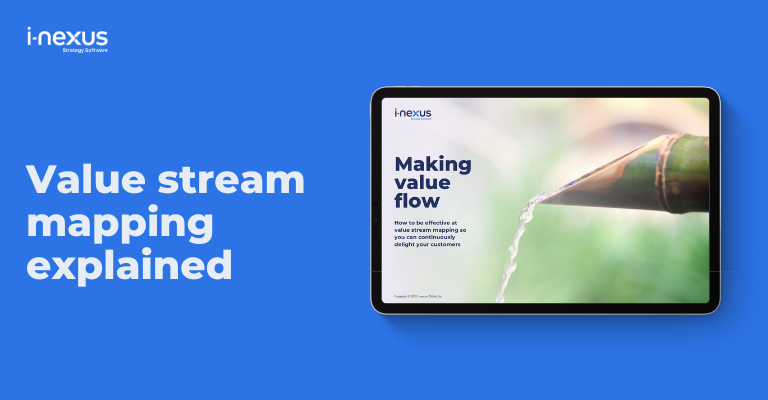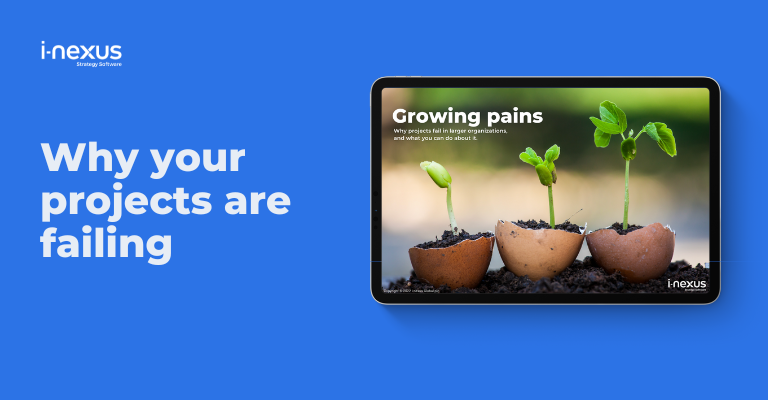Kaizen Events are short structured problem solving workshops focusing on one process, and these are our tips on how you can prepare for one.
Written by: Nigel Richardson
The title of this blog relates to a specific event (a Kaizen / blitz), but at its core are actionable insights into how you can facilitate. Kaizen events are the pinnacle of facilitation, the art of taking a group of individuals on a journey from ambiguity and disagreement to a collaborative focus on the improvement actions required.
Kaizen events are one of the largest, most challenging improvement interventions you can have, afterall they focus on a value stream.
Kaizen events can be referred to as a value stream workshop or baseline / bootcamp event. There are a number of factors that make this style of event the ultimate facilitation challenge that is equally a rewarding experience for all.
Giving shape to your Kaizen event
The goal of a Kaizen event is to eliminate waste and focus on doing the things that deliver customer value, often revolving around the 8 wastes of Lean.
However, planning your event is a must. These are the factors to consider.
Identifying your participants
Variety is a significant factor.
The very nature of the event brings teams and individuals together from very different parts of the business who have never had to interact before.
The volume of participants is also a consideration.
When the event requires each functional area to be represented by one or two participants you can very quickly end up with in excess of 15 and up to 30 attendees.
The duration
An event of this nature would normally last for one week.
That is a challenging duration to keep a group focussed on the task at hand.
Structure, delivery and focus are paramount to keeping participants engaged throughout the duration.
The complexity
As we have already discussed in the Value Stream Mapping article, this type of event can be vast in magnitude.
The volume of business issues you can uncover and the associated data that can be required to quantify those issues can be overwhelming.
Being able to understand the relative impact (and the priority) of a very disparate set of challenges from different parts of the business can be a challenge.The stakes
Normally the stakes for this level of improvement are high.
The expectation is normally that an investment in time of the workshop attendees should lead to some pretty transformational performance improvements being delivered.
The “change stakes” are also pretty significant.
The improvements that are defined during this process can fundamentally challenge the current operating model and the mindsets and assumptions that sit behind it.
The stakeholders
During my time in pharma I had the opportunity to run a high volume of this type of event.
We assigned and rotated the usual traditional workshop roles such as “time-keeper” or “scribe”.
But one role that we quickly learned was essential was “crowd control”.
The high stakes of expected results combined with the potential for disruptive change means that there will be a large number of leaders and managers very interested in what you are doing.
Whether motivated by excitement of the potential or the fear of losing control, they will move from support and interest to very active involvement and needing to be “consulted” in the output and progression.
If you are not careful you can have numerous 20-30 minute slots of your planned agenda disrupted by another senior leader “just popping their head in to see how it is going”.
So, when facing a Value Stream level Kaizen event things can be very exciting but also based on the factors above – potentially pretty overwhelming.
We will now cover how to maximise the opportunity for success, starting with Kaizen event preparation:
Preparation is everything
Avoid taking this step seriously at your peril, poor preparation will result in an event with the odds stacked against you.
Do not underestimate the time required to prepare well both in terms of your individual effort and the elapsed time this will take.
The preparation can be broken down into 4 key components:
- Logistics
- Stakeholders
- People
- Facts and data
1. Logistics
Some questions and considerations for the logistical side of your workshop:
Do you have the right room for the entire duration of the workshop and beyond?-
- Does it have the wall space you need?
- If in doubt go for shabbier – the smarter the room the less likely you will be able to put things on the wall for fear of blue tac or tape marks.
- In the past I have run these events in old disused, forgotten spaces of a manufacturing site, gyms or even the function room of a nearby social club.
- Does it create appropriate “distance” from the day to day job for the participants don’t give people to opportunity to “escape to the day job” if at all possible.
- Go and see your room prior to running the week to check it does meet your needs.
Brown paper and post-its.
-
- The brown paper is the essential canvas for all your visual output as the week progresses. Clearing the space and keeping things arranged is much easier if you are removing and rolling up large sections of brown paper with the content still attached.
- More on post its later, but in preparation think about what you think you will need and get triple that amount…
- Marker pens – very hard to read biro from any sort of distance
- Tape – Duct tape, masking tape, Sellotape. All have different uses.
Breaks and lunch
if you have the budget bring refreshments and food to you, lunch breaks are another opportunity to bring the day job distraction back into focus
Templates & Training material
Be very familiar with the tools you plan to use, how you plan to explain them and how you plan to show a visual template for participants to follow.
2. Stakeholders
Some questions and considerations for assessing the support you need from your stakeholders:
Talk to function leaders
Plan for at least one meeting with each leader of a function that is involved in your end to end value stream.
They will either view this event as a significant opportunity or threat, so some “one to one time” is vital.
-
- What pain do they think their function has and where do they think the causes lie?
- What do they think the top 3-5 improvements will be coming out of the event?
- What performance is expected?
- Have they ever tried anything like this before?
- What does good look like for them? How could this event help (or hinder) their objectives for the year and beyond?
Prepare some information you can review during these meetings:
-
- Your view of a top level “project charter”, what is the business problem you are looking to solve, examples of in and out scope deliverables, approach etc.
- Some form of briefing pack on how the week will work, what a value stream map is, the types of improvement that often emerge.
- Finally, be very clear what you would like from them to ensure the end to end event is a success. For example, attendance at the daily sponsor outbrief (more on that later).
Each of these one to ones will yield some useful information:
-
- Does this leader regard this event as an opportunity or a threat?
- How big a role would they like to play in the event?
- What are they expecting to come out of the event (early warning if your improvement themes are counter intuitive)?
3. People
Some questions and considerations for assessing who you want to attend the Kaizen event:
Right attitude, right mindFor each function that needs to provide somebody do you know the individuals with the right attitude and mindset who have hunted for change in the past? Or, are you settling for who is available?
Know who you need
The leaders of each area are constantly juggling demand with capacity, if you ask “for a representative” you are likely to be assigned who can be spared.
In my experience, the best strategy is to ask for the person or people that you would like using their names. Be prepared to explain very clear why, from an experience and attitude perspective, their participation is essential.
Educate
The more you can educate the managers of each area as to the value of the event, the more likely your request will be prioritised.
Excite
Create excitement in the team before it is formed.
Release communication prior to the event (multiple times), create some excitement that the event is coming.
Meet the participants over a coffee, have a more informal chat with these people to understand their answers to the questions you have posed to the leadership stakeholders.
Train
Deliver some small training modules to the team to start to build their understand of the concepts involved and make the week less of a surprise.
4. Facts and data
Here's what you need to do to have the right context for the Kaizen event:
The data wall
The first part of the workshop will be focussed on reviewing the “data wall”.
Across the end to end value stream, what are the key bits of existing performance data that can be collated in advance of the workshop?
KPIs
Define the key KPIs that link to your overall problem and how they are relevant to the overall business view of performance.
Investigate any existing systems such as ERP software in manufacturing or call handling software in a service environment.
Time
The more time you can invest in the hard facts, backed up by data, the quicker you can move forward.
Link pre-event training and your data needs
Think about how you can link the training you may giving the participants in the build up to the event with the data collection you may want them to undertake.
Can each function provide you with a storyboard of their performance as preparation:
-
- Timings
- Waste
- Variation
- Quality, Cost, Delivery
In some cases I have run these events where there has been very little or no data available and the reality has been that a period of manual data collection is needed to actually understand the reality of problem and impact.
Do not be afraid to acknowledge this and possibly break up the event into 2 day and 3 day sections split by a period (often a number of weeks) for data collection.
Moving into the running stage
By keeping these insights in mind you can plan for a successful Kaizen event. However, the actual running of the workshop is very much different from its planning.
For more advice, be sure to download a copy of our Value Stream Mapping eBook:
Continue learning about continuous improvement
Click here to learn more about continuous improvement, or take a look at these content recommendations:
- Continuous improvement in 2020 and beyond: Watch how continuous improvement will evolve into the 2020s and how you can be successful.
- DMAIC v Six Sigma v Lean: Our guide to the steps and tools you'll need when driving process improvement through one of these three methodologies.
- The Leader's Guide to Continuous Improvement: Download this eBook to get a comprehensive overview of how DMAIC, Six Sigma, Lean, PDCA can support your business in finding competitive advantage.
About the author
Nigel Richardson is a continuous improvement expert. His background spans 20 years in business transformation and continuous improvement across retail, pharma, aviation and IT supply chain. He is passionate about supporting organizations to achieve their strategic, transformational and improvement goals, and outperform their peers year after year.
If you’d like to talk more about your strategic challenges, reach out to him on nigel.richardson@i-nexus.com or connect with Nigel on LinkedIn for the latest Strategy Execution insights.




